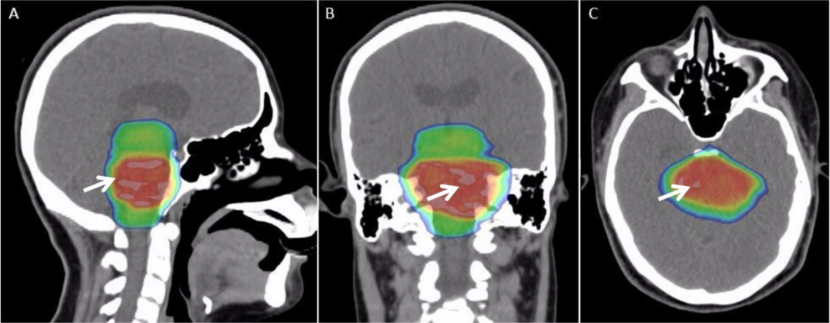
New research from Stanford University and the National Institutes of Health (NIH) has revealed that there may be alternative treatments available for a deadly childhood cancer called diffuse intrinsic pontine glioma. While chemotherapy has been the go-to protocol for this rare form of cancer, researchers have believed that other known methods could hold the key to treatment. This belief has fueled a research project that has furthered insights about diffuse intrinsic pontine glioma and provided hope for the future.
For this study, Stanford pediatric neuro-oncologist Michelle Monje, MD, PhD, and the team from the NIH utilized high-throughput screening methods-and robots from the National Center for Advancing Translational Sciences-to test nearly 10,000 two-drug combinations. The hope was to identify a two-drug combination that could effectively treat intrinsic pontine glioma where single drugs had failed - and the results have been encouraging.
What Is Diffuse Intrinsic Pontine Glioma?
Diffuse intrinsic pontine glioma, or DIPG, is an aggressive childhood cancer. More specifically, DIPG is a brain tumor found in the glial tissue-tissue that exists to provide support and protection to neurons. DIPG forms only in the glial cells found in the pons, an area at the base of the brain that controls essential bodily functions like breathing and heartbeat. As a result, symptoms include issues controlling movement of the eyes, face, and limbs, as well as issues with chewing, swallowing, and coordination.
DIPG is rare, affecting only 300 children each year, and makes up just 10% of all central nervous system tumors in children. It primarily strikes between the ages of 5 and 9, although these tumors can appear at any time throughout childhood. Unfortunately, DIPG's five-year survival rate is under 1%, with a median survival of less than one year, making this one of the deadliest forms of childhood.
How Is DIPG Treated?
Currently, radiation treatments designed to kill cancer cells and reduce the size of DIPG tumors have shown limited success after a period of six to nine months. Similarly, the various chemotherapy protocols successfully used in the treatment of other cancerous brain tumors have not proven successful for DIPG. As a result, Dr. Monje and her team of researchers at Stanford and the NIH began testing combinations of these chemotherapy drugs in an attempt to isolate a mixture that could succeed where individual drugs had not.
Researchers began with over 7 million two-drug combinations, which were narrowed to approximately 9,000 sets of compounds capable of crossing the blood-brain barrier to kill DIPG cells. Using high-throughput screening techniques, NCATS robots accomplished the testing of all compounds in the matter of a few days. Two medications, panobinostat and marizomib, appeared to surpass all others in killing DPIG cells.
Hope for the Future
Follow-up studies conducted at Stanford found that panobinostat and marizomib appear to interfere with the production of the tumor's main energy source, nicotinamide adenine dinucleotide-also known as NAD. Unlike other treatments, these two drugs appear to interfere only with DIPG cells while leaving surrounding brain cells intact.
While experts agree that panobinostat and marizomib cannot cure DIPG on their own, the research being done by Stanford and NIH is an important step in the right direction. By using a combination of these two drugs, along with altering how a DIPG tumor affects surrounding brain tissue and developing immunotherapy against similar cancers, researchers hope to craft a treatment that is effective against DIPG.
© 2025 HNGN, All rights reserved. Do not reproduce without permission.








